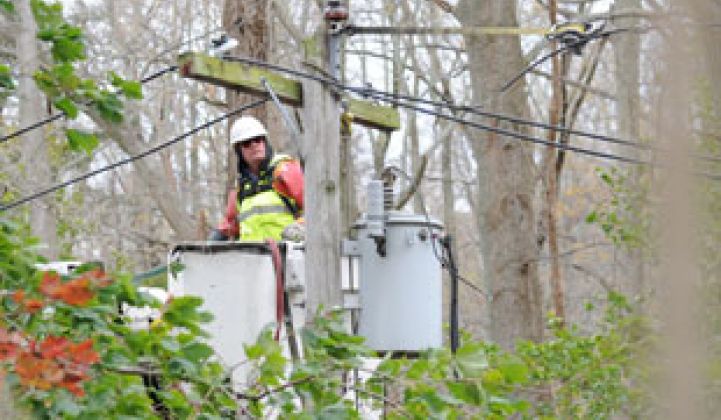New York Governor Andrew Cuomo announced his proposal this week for the embattled Long Island Power Authority (LIPA).
For starters, LIPA will hand over its utility operations to Public Service Enterprise Group (NYSE: PEG), which owns New Jersey’s Public Service Electric & Gas.
The overhaul of the public utility comes in the wake of intense criticism after Superstorm Sandy, when more than 90 percent of LIPA’s customers were left without power, some for weeks.
Cuomo will reduce the company’s debt, stabilize rates, improve customer service and energy response and create more oversight for LIPA. The company’s board and employees will also face deep cuts.
“The aftermath of Superstorm Sandy made it undeniably clear that the LIPA status quo was unacceptable and that we needed to create a new Long Island utility system,” Governor Cuomo said in a statement. “We are also pleased that the new utility company is seeking to freeze rates for three years, because Long Islanders have paid too much for too little for too long.”
The bill received a relatively warm reception in Albany, where it will have to get legislative approval. The governor’s office described just some of the major issues in a press release:
"Under the old structure with LIPA in charge of operations, decisions on resource/capital investment were made using consultants and not utility managers actually running the system, often putting political priorities ahead of the needs of ratepayers. Additionally, since it was established, LIPA has not been subject to any State oversight with no accountability for performance."
The LIPA board will be slashed from fifteen to five members, and the staff of more than 90 will be cut to about twenty. PSE&G will be given full authority to manage daily operation, budgeting, operations and maintenance, storm preparedness, infrastructure improvements and energy efficiency and renewable activity.
LIPA was created as a public entity in the late 1980s because of “the lack of confidence that electricity could be supplied in a reliable, efficient and economic manner by the Long Island Lighting Company,” according to the Moreland Commission, which examined New York utilities’ responses after Sandy. A quarter of a century later, the utility is being privatized again in an effort to finally get it right.
Although PSE&G’s first task will surely be fixing the most glaring business problems, it could also bring its forward-looking resiliency plan to Long Island. Earlier this year, PSE&G released a $4 billion “Energy Strong” plan in New Jersey. Some of that money will go to raising at-risk infrastructure to be more flood-resistant, but it will also go to protect critical facilities and deploy smart grid across the distribution network.
“Business-as-usual is not enough,” said Ralph Izzo, CEO of PSE&G, at the Agrion Energy & Sustainability Summit in New York City in February, in reference to rebuilding in New Jersey after the storm.
Resiliency and building for the energy needs of the future are also a focus in Albany, where Richard Kauffman is serving as the state’s first energy czar. While not specifically mentioning LIPA, Kauffman has called repeatedly for utilities not only to be more resilient, but also to address their role in a changing energy landscape.
In a recent article in Transmission & Distribution World, LIPA wrote that it was “making a step-by-step transition to standards-based IT infrastructure, which has proven to be a lower-cost and lower-risk approach.” The utility is also deploying a dynamic asset risk management (DARM) strategy with Xtensible to better manage risk and improve forecasts for asset lifecycle and storms.
Before Sandy hit, LIPA had supposedly accelerated the implementation of its new outage management system, but it was not in place by the time the superstorm arrived. It is unclear what pilots and projects will continue; everything will likely go under the microscope in the handover. Projects that support the buzzword of the year, resiliency, or ones that are too costly to ax at this point, could stay on the table.
National Grid will still run operations for most of 2013, until the transition is complete, but Cuomo said that he has streamlined the relationship so National Grid can respond more quickly in the event of a large storm. The Long Island office of the Department of Public Service will oversee the new utility.



